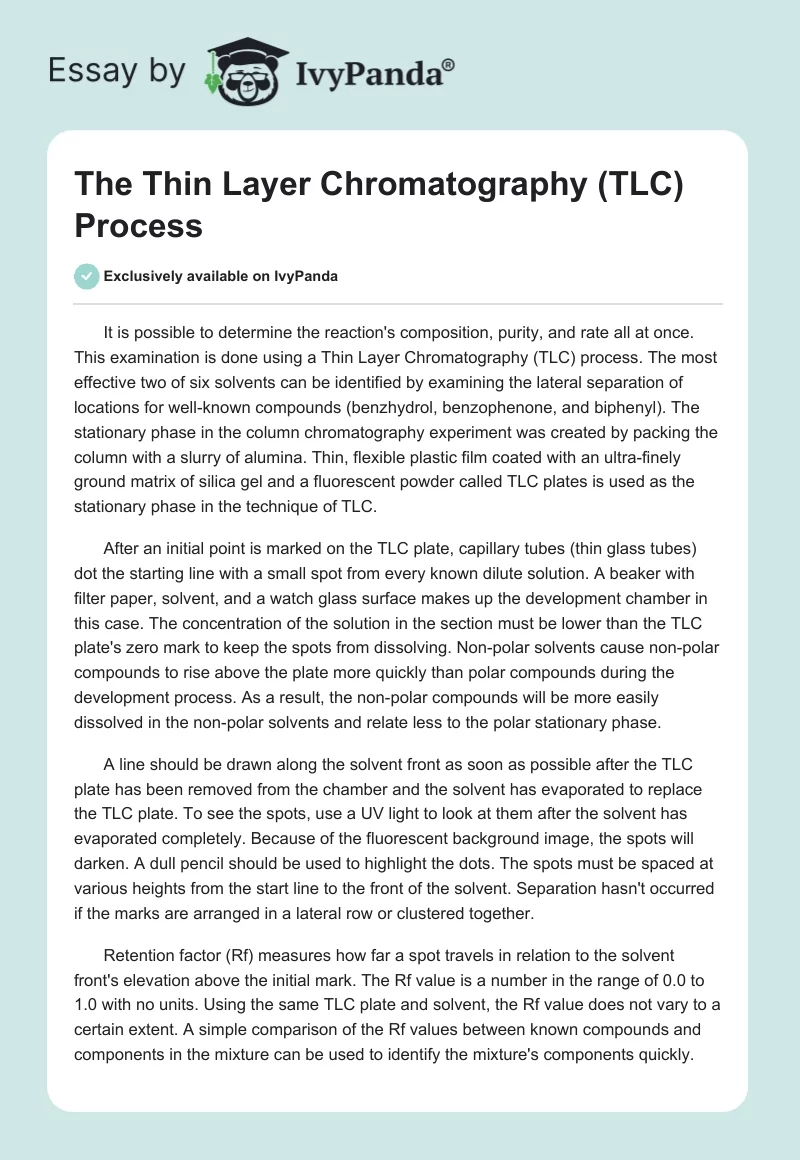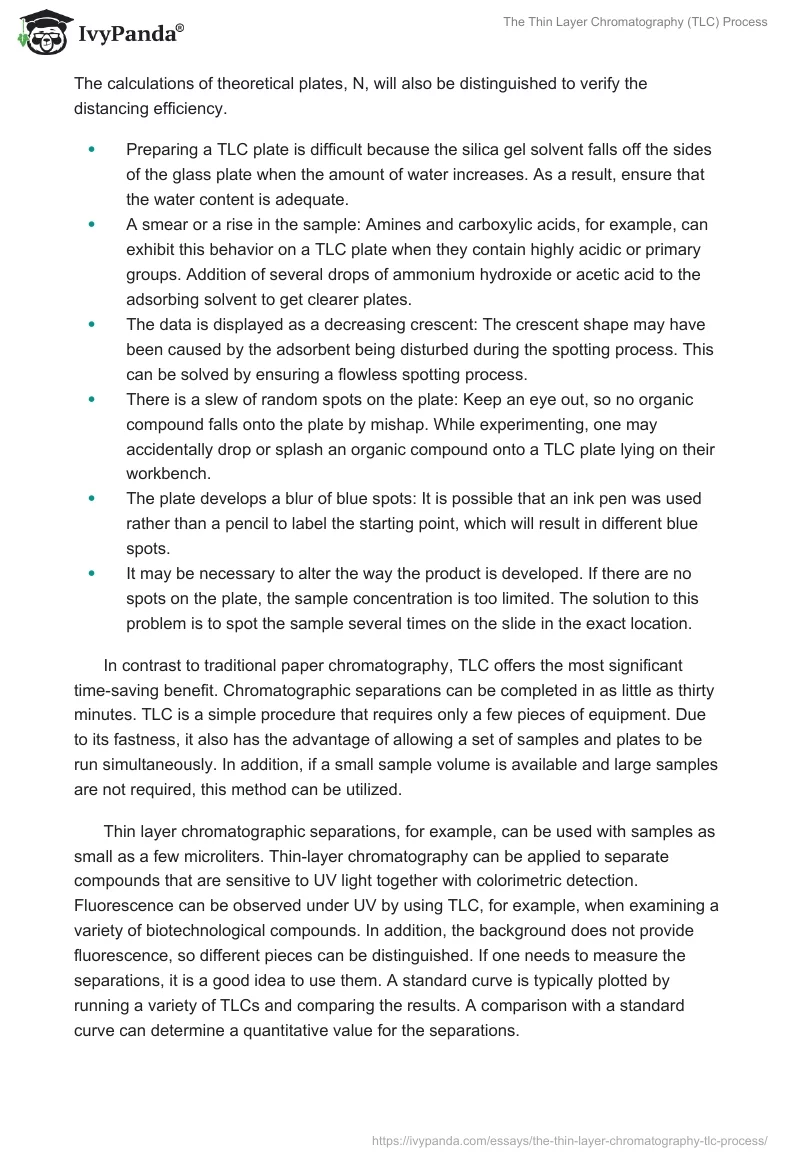It is possible to determine the reaction’s composition, purity, and rate all at once. This examination is done using a Thin Layer Chromatography (TLC) process. The most effective two of six solvents can be identified by examining the lateral separation of locations for well-known compounds (benzhydrol, benzophenone, and biphenyl). The stationary phase in the column chromatography experiment was created by packing the column with a slurry of alumina. Thin, flexible plastic film coated with an ultra-finely ground matrix of silica gel and a fluorescent powder called TLC plates is used as the stationary phase in the technique of TLC.
After an initial point is marked on the TLC plate, capillary tubes (thin glass tubes) dot the starting line with a small spot from every known dilute solution. A beaker with filter paper, solvent, and a watch glass surface makes up the development chamber in this case. The concentration of the solution in the section must be lower than the TLC plate’s zero mark to keep the spots from dissolving. Non-polar solvents cause non-polar compounds to rise above the plate more quickly than polar compounds during the development process. As a result, the non-polar compounds will be more easily dissolved in the non-polar solvents and relate less to the polar stationary phase.
A line should be drawn along the solvent front as soon as possible after the TLC plate has been removed from the chamber and the solvent has evaporated to replace the TLC plate. To see the spots, use a UV light to look at them after the solvent has evaporated completely. Because of the fluorescent background image, the spots will darken. A dull pencil should be used to highlight the dots. The spots must be spaced at various heights from the start line to the front of the solvent. Separation hasn’t occurred if the marks are arranged in a lateral row or clustered together.
Retention factor (Rf) measures how far a spot travels in relation to the solvent front’s elevation above the initial mark. The Rf value is a number in the range of 0.0 to 1.0 with no units. Using the same TLC plate and solvent, the Rf value does not vary to a certain extent. A simple comparison of the Rf values between known compounds and components in the mixture can be used to identify the mixture’s components quickly. The calculations of theoretical plates, N, will also be distinguished to verify the distancing efficiency.
- Preparing a TLC plate is difficult because the silica gel solvent falls off the sides of the glass plate when the amount of water increases. As a result, ensure that the water content is adequate.
- A smear or a rise in the sample: Amines and carboxylic acids, for example, can exhibit this behavior on a TLC plate when they contain highly acidic or primary groups. Addition of several drops of ammonium hydroxide or acetic acid to the adsorbing solvent to get clearer plates.
- The data is displayed as a decreasing crescent: The crescent shape may have been caused by the adsorbent being disturbed during the spotting process. This can be solved by ensuring a flowless spotting process.
- There is a slew of random spots on the plate: Keep an eye out, so no organic compound falls onto the plate by mishap. While experimenting, one may accidentally drop or splash an organic compound onto a TLC plate lying on their workbench.
- The plate develops a blur of blue spots: It is possible that an ink pen was used rather than a pencil to label the starting point, which will result in different blue spots.
- It may be necessary to alter the way the product is developed. If there are no spots on the plate, the sample concentration is too limited. The solution to this problem is to spot the sample several times on the slide in the exact location.
In contrast to traditional paper chromatography, TLC offers the most significant time-saving benefit. Chromatographic separations can be completed in as little as thirty minutes. TLC is a simple procedure that requires only a few pieces of equipment. Due to its fastness, it also has the advantage of allowing a set of samples and plates to be run simultaneously. In addition, if a small sample volume is available and large samples are not required, this method can be utilized.
Thin layer chromatographic separations, for example, can be used with samples as small as a few microliters. Thin-layer chromatography can be applied to separate compounds that are sensitive to UV light together with colorimetric detection. Fluorescence can be observed under UV by using TLC, for example, when examining a variety of biotechnological compounds. In addition, the background does not provide fluorescence, so different pieces can be distinguished. If one needs to measure the separations, it is a good idea to use them. A standard curve is typically plotted by running a variety of TLCs and comparing the results. A comparison with a standard curve can determine a quantitative value for the separations.
Reference
Ciura, K., Dziomba, S., Nowakowska, J., & Markuszewski, M. J. (2017). Thin layer chromatography in drug discovery process. Journal of Chromatography A, 1520, 9-22.


